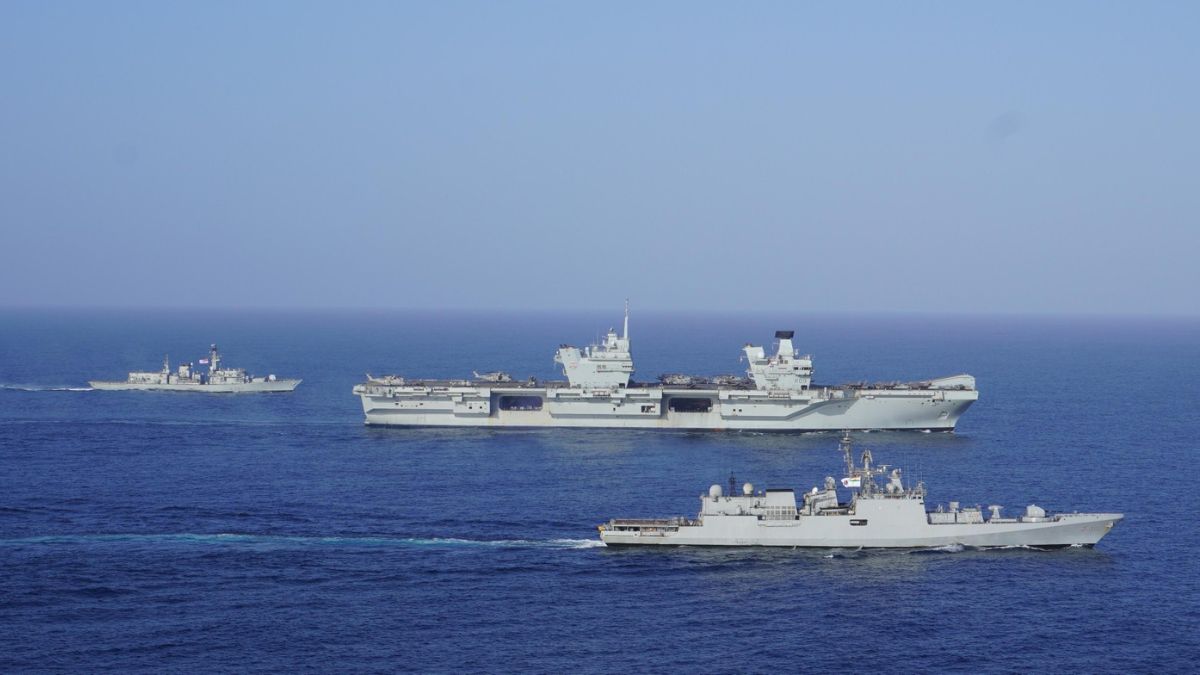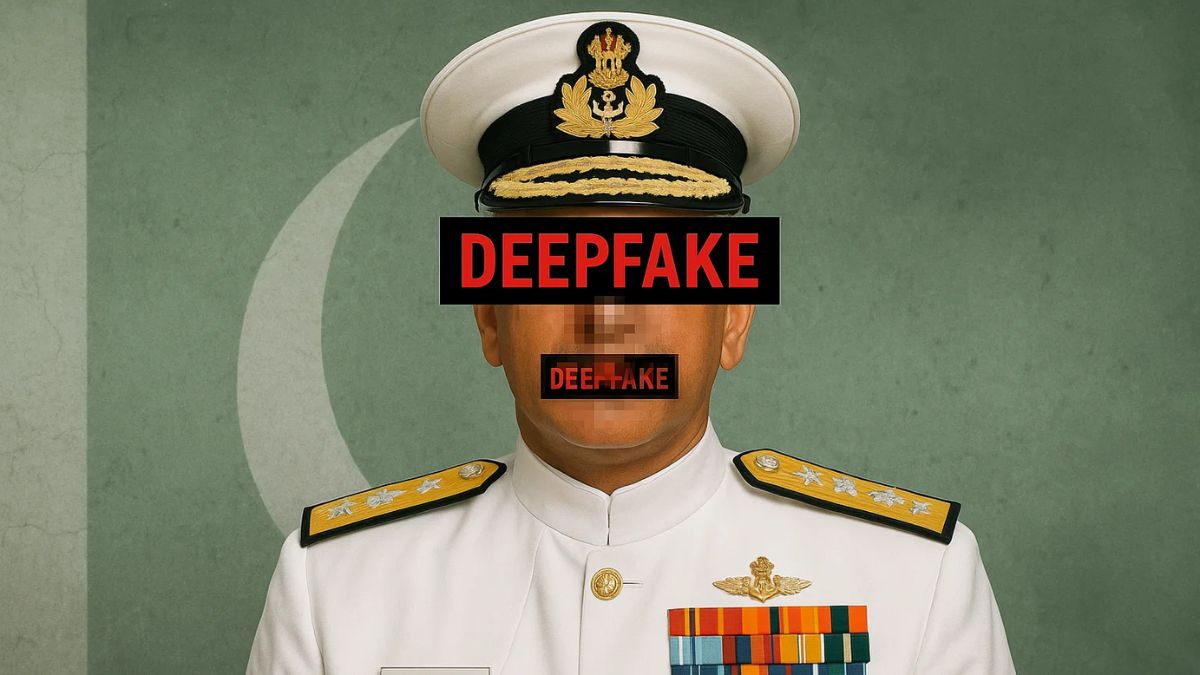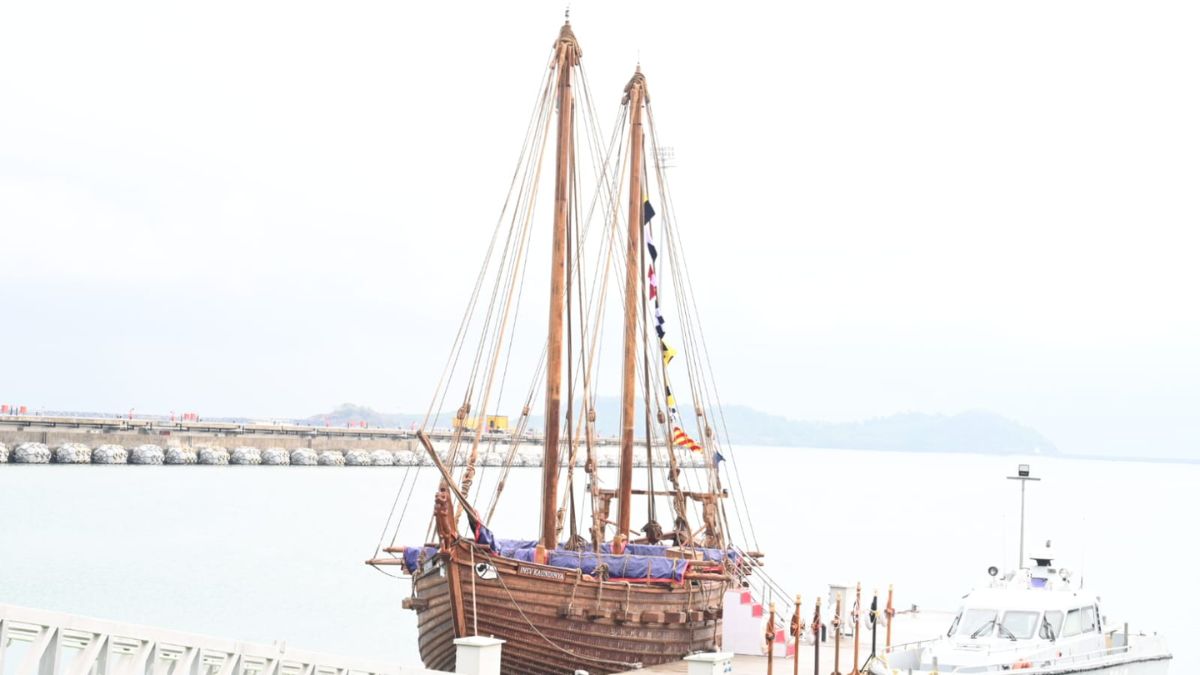INS Vikrant, HMS Prince Of Wales Lead Konkan 25 Indo-UK Naval Drills: Why Was It Historic?

Image courtesy: X.com/@Indiannavy
India and the United Kingdom have launched Konkan 25, a landmark edition of their bilateral naval exercise that, for the first time, brings together both nations’ carrier strike groups — INS Vikrant and HMS Prince of Wales. The exercise, which began on Sunday (October 5) off India’s western seaboard and continues until October 12, marks a new high point in India-UK maritime cooperation.
What makes this year’s exercise historic?
This is the first time that the Indian and British navies are conducting coordinated carrier strike group operations. The deployment involves an array of advanced assets — aircraft carriers, destroyers, frigates, submarines and integral air wings — working in tandem across surface, sub-surface, and aerial domains.
Officials said the exercise aims to strengthen air-maritime interoperability through anti-submarine warfare, air-defence operations and cross-deck flying drills. Assets from Japan and Norway are also participating, reflecting the exercise’s expanded scope and the growing spirit of international maritime collaboration in the Indo-Pacific.
How does Konkan 25 build on earlier editions?
Since its inception in 2004, Exercise Konkan has evolved from basic seamanship exercises into complex multi-domain operations. Conducted biennially, it alternates between India and the UK.
2019: Held off the UK’s southern coast, featuring INS Tarkash and HMS Defender in anti-air and anti-surface warfare drills.
2021: The first tri-service edition, Konkan Shakti 21, saw joint operations between the two countries’ armies, navies and air forces. India deployed INS Kolkata, Kochi and Chennai, while the UK brought HMS Queen Elizabeth and its F-35B jets.
2023: Conducted off the Konkan coast with INS Trishul and HMS Lancaster, focusing on anti-submarine and boarding operations.
Each iteration has progressively deepened interoperability, tactical understanding and shared commitment to maritime security.
Why does this matter for India’s maritime strategy?
For New Delhi, the exercise showcases India’s expanding maritime reach and its capacity for power projection through indigenous platforms such as INS Vikrant. The drills highlight India’s growing role as a net security provider in the Indian Ocean and its strategic alignment with like-minded democracies committed to a rules-based international order.
Officials said the exercise also carries symbolic weight: it represents a convergence of historic naval traditions with contemporary strategic interests. As the UK seeks to maintain an Indo-Pacific presence and India strengthens its partnerships in the region, Konkan 25 underscores how naval diplomacy is fast becoming a cornerstone of twenty-first-century security architecture.
Together, Vikrant and Prince of Wales signal more than maritime cooperation — they embody a shared vision of deterrence, resilience and freedom of navigation across the Indo-Pacific seas.







